
The
photodetector (PD)
is the main input device of the pulse oximeter system.
These
devices sense the intensity of light emitted by each LED after the light passes
through the tissue.
The
PD produces a current which is linearly proportional to the intensity of
incident light.
This
current is then converted to a voltage which is passed on to the pulse oximeter
unit for processing.
The
choice of PD depends on factors such as performance, packaging, size, and cost.
APMKorea
produces PDs, DDN2094(4.46X4.46mm)/2092(2.8X2.8mm)/2090(2.03X2.03mm)/2091(noise filter)/3064(1.42X1.42mm)/2043(0.86X0.86mm) as active areas.
All
of them are Si photodiode with high sensitive low capacitance PiN structure for
pulse oximeters.
Your
choosing a PD sensor must be considered,
1.
Spectral response of device to different wavelengths
2.
Linearity of the output signal, an output linearity proportional to the
intensity of incident light is highly desirable.
3.
Sensitivity or the ratio of the electrical output signal to the intensity of
incident light.
4.
Response time, how quickly the output of the device is able to response to a
change in the incident light.
5.
Cost
The
p-i-n photodiode has an intrinsic (lightly doped)
layer between the n and p layers.
This
modified structure typically results in lower junction capacitance than for p-n
diode of the same optical sensing area.
As
a result, p-i-n photodiode response time is faster than p-n junction
photodiodes.
Bandwidths
typically run on the order of 10 MHz while p-n diode shows 50KHz.
Because
of relatively low cost and linear output current response to incident light
both the standard p-n diodes and p-i-n diodes are currently in use today as the
PD in pulse oximetery systems.
There
are several parameters serve as evaluation criteria for pulse oximeter
designer.
1.
Junction
Capacitance
Junction
capacitance is proportional to the junction area, it also decreases with
increasing reverse bias voltage so it may be expressed at a specified reverse
bias voltage across the photodiode.
The
response speed of the photodiode depends on the RC time constant of the
junction capacitance and the load resistance.
Therefore
a higher response speed can be obtained by selecting small junction area and by
a larger reverse bias to the photodiode.
APMKorea
provides p-i-n photo detector with different area for oximeter designers.
DDN2094(4.46X4.46mm) ; 49pF
DDN2092(2.8X2.8mm)
; 45pF
DDN2090(2.03X2.03mm)/DDN2091(2.03X2.03mm
noise filter) ; 25pF
DDN3064(1.42X1.42mm)
; 15pF
DDN2043(0.86X0.86mm)
; 5pF
2.
Dark
current
Dark
current is the reverse leakage current that
flows in a photodiode in the absence of light.
Although
technically, no dark current should flow with zero, most zero bias applications
have a small voltage across the photodiode such as the offset voltage of the op amp.
The
dark current increases as the reverse voltage or ambient temperature increases.
3. Sensitivity
Since
the output current of the photodiode is linear, the sensitivity is normally
expressed as the output current level for a known incident light level at a
specified temperature.
In
some cases, the sensitivity is determined with an LED optical source and thus
the center frequency of the LED is specified.
In
this case incident light is expressed in mW/cm2. If
the light source is an International Commission on Illumination (CIE) standard,
it is expressed in Lux.
4.
Spectral
response
Figure
4 shows that photodiodes have a spectral response and as such care should be
taken when selecting a PD.
The
designer should keep in mind the wavelengths of interest in pulse oximeter when deciding on an proper PD.
APMKorea
provides PD with peak wave length 940nm, able to detect 400~1050 nm, following
is characteristic of DDN2090M.


5.
Packaging
PD
used in pulse oximeter probes has some unusual mounting and
mechanical assembly requirement.
A
variety of characteristics should be considered including cost, hermetic seal,
package material and package type.
In
general, PDs are available in three types of packages;
5.1 Can package(TO). APMKorea provides DDN3120 as Fig.5 Can package
The
PD chip is mounted on a metallic stem and is sealed with a cap that has a
window to allow incident light to
reach the semiconductor surface.

Fig.
5
5.2 Resin on high Tg package
The
PD chip is mounted on a High Tg substrate and is coated with resin.
APMKorea
provides high reliability surface mount device DCM01, DCM02, DCM03, DDN2090,
DDN2094 with
hermetic seal as shown Fig. 6

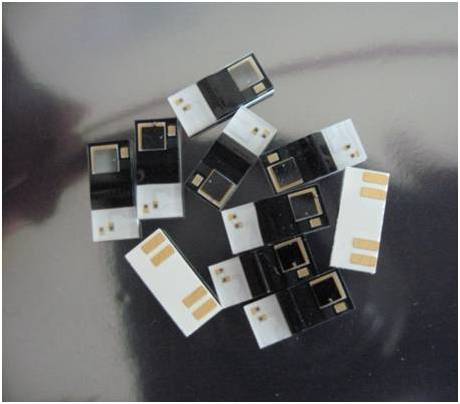
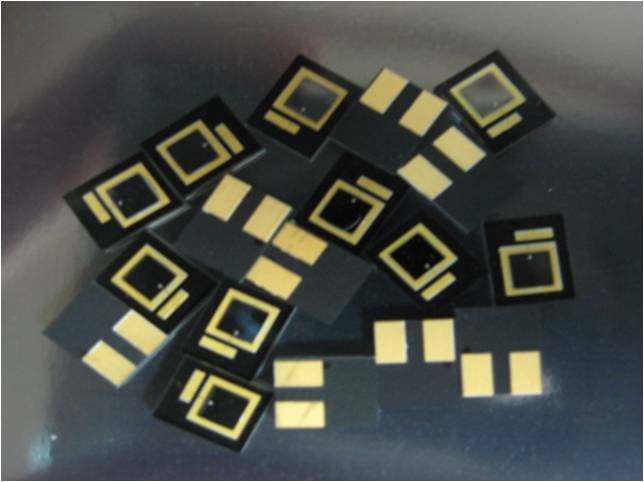
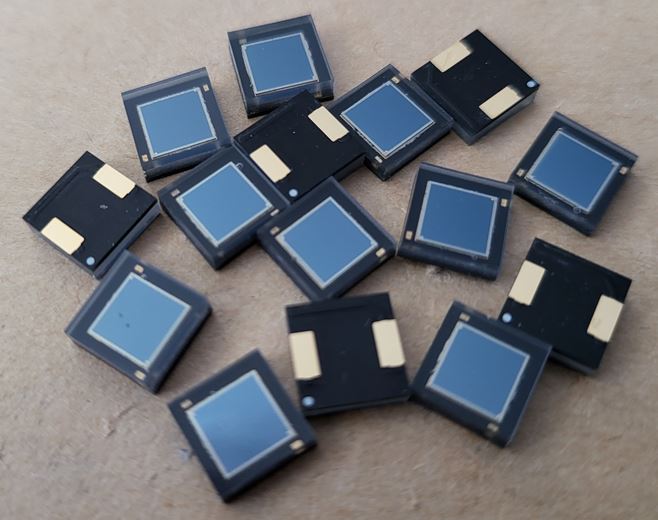
DCM01 DCM02
/ DCM03 DDN2090
DDL2094
Fig.
6
5.3 EMC mold package
The
PD chip is mounted on a PCB or Lead frame and molded with Epoxy Mold Compound.
APMKorea
provides high sensitive surface mount device DDN3064M, DDN2090M, DDN2092M as shown Fig. 7.
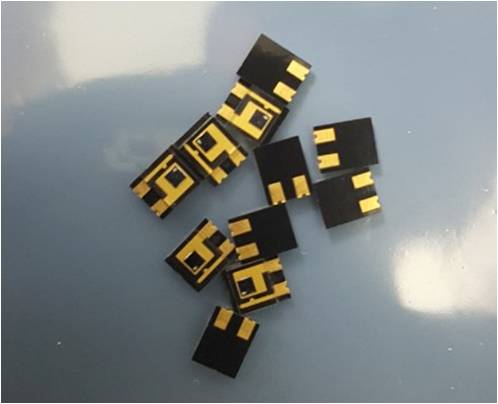
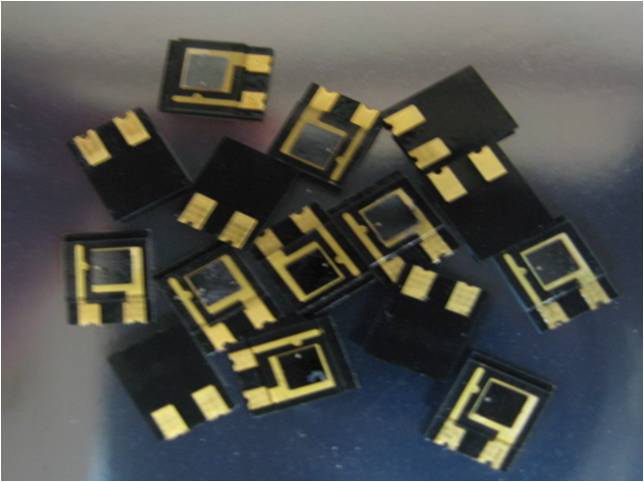
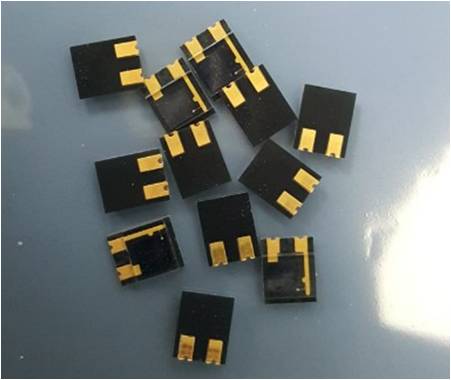
DDN3064M DDN2090M
DDN2092M
Fig. 7
There
are excessive ambient lights such as surgical lamps, fluorescent lights,
infrared heat lamps and direct sunlight.
Usually
this type of interference will saturate the PD so that no pulse can be
distinguished.
However
some of noise sources may result in apparently normal but inaccurate readings.
Since
oximetry is a system with an optical interface, it is important to minimize the
effects from light other than the optical signals of interest.
Most
of the light being transmitted (reflected) from the LEDs must not reach the
photodiode unless it has passed through tissue containing arterial blood.
Pulse
oximeter designer must attempt to limit the light reaching the PD to that which
has traveled through tissue containing arterial blood.
This
can be accomplished through mechanical proper LED/PD placement and noise
filtering.
Light
impervious barriers should be placed between LED and PD.
APMKorea
DCM01 had black isolator to minimize such cross talk between them in Fig. 6. and DCM02 coated the housing around the PD with black
material that does not scatter or reflect light.
APMKorea
DDN2091M is able to filter the noise out to make sure clear proper output
signal.
 Fig. 8
Fig. 8












